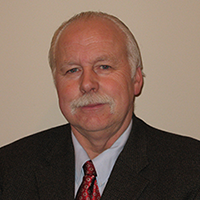By Norm Grusnick, PEng • Sales Manager, ECCO Supply

Industry today consumes roughly 40 percent of the world’s electricity. Two-thirds of that electricity is used to power electric motors. AC motors are the workhorses of industry, yet they are power hogs. Let’s put this into perspective: there are roughly 25 million small-frame AC motors employed on fan drive units. Assuming average power consumption of approximately 150 watts and a duty cycle of 75 percentage, these units consume 25 billion kWh of power each year.
This means that, given Site C Dam generates 900mW annually, the average annual output from three Site C Dams is needed to supply the power just for these small frame AC motors.
Rising energy costs and new government regulations have spawned revolutionary innovations in motor technology. Electronically commutated (EC) motors used in various fan applications, such as refrigeration, air conditioning, and building systems, consume roughly 30–40 percent less power than AC motors. So, if all 25 million small-frame AC motors in our earlier example were switched to EC, this could save nearly 10 billion kWh.
This is great news for everyone—engineers, designers, and owners who actually pay the power bills. EC technology is the future of sustainable energy consumption in industrial and residential appliances, pumps, and HVAC applications.
You may hear EC motor technology referred to as electronically commutated motor (ECM), permanent magnet, brush free, brushless DC, or brushless alternating current. Some of these may vary slightly in design but carry the same basic concept. Whatever you call it, EC technology is here to stay.
The new government energy rules have prompted engineers to replace or retrofit many of today’s 1 HP or smaller AC motors to EC. These include furnaces, fan compressors, and pumps. Larger 1 HP to 10 HP systems switching to EC technology have the ability to lower power bills significantly for large facilities.
How EC Motors Work
Basic DC motors rely on carbon brushes and a commutation ring to switch the current direction, and therefore the magnetic field polarity, in a rotating armature. The interaction between this internal rotor and fixed permanent magnets induces its rotation. In an EC motor, however, the mechanical commutation has been replaced by electronic circuitry. Through its brushless design, the magnetic field is already established by permanent magnets on the rotor. This allows you to supply the right amount of current to the fixed armature in the right direction at precisely the right time for accurate motor control.
The brushless EC motor has external electronics, a rotor with permanent magnets, and a stator, which has a set of fixed windings. A circuit board continually switches the phases in the fixed windings to keep the motor turning. Speed is controlled by commutation electronics, so motors are not limited to synchronous speeds and can rotate much faster than traditional AC motors. The EC motors’ designs are becoming ever more cost competitive as volume increases. They use less material and low cost ferrite magnets to achieve superior performance and higher efficiencies. Due to their flexibility, EC motors are now being used in many HVAC applications.
Speed Control Pays Off: Think of EC Like Driving a Car
Imagine if you turned on the engine and went to 100% of the speed, then tried to control the speed of the car by using your brakes every time. That’s how most commercial and industrial applications work today with AC. Sure, you can get multiple speed motors and external control devices. They require filtering systems to properly protect the motor shaft from damage, such as electrical fluting.
EC motors automatically and continuously adjust to meet current demand. Multiple speed options come standard. Speed can typically be controlled in the range of 10–100%. ■


